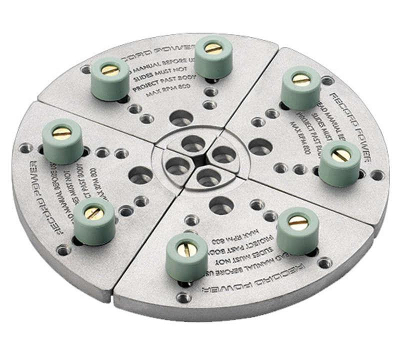ScaredyCat
Established Member
I think that's what they're called, these type:

I was wondering why, in all the videos I've seen nobody ever uses them for an initial bowl turning. I tend to see:
1. Round the piece
2. Shape the bottom of the bowl
3. Add a tenon or recess
4. finish the outside.
5. flip the bowl, inserting the tenon in the chuck.
Why don't people use these jaws, it seems, ever?
ie
1. Round the piece
2. Shape the inside of the the bowl and finish.
4. Shape most of the outside of the bowl.
5. flip the bowl, using cole jaws do the final part of the bowl and finish.
It seems to my uneducated eye that you'd keep the bowl oriented in the same direction for 95% of the work, and only flip it for the base. The part that's seen the least.
.

I was wondering why, in all the videos I've seen nobody ever uses them for an initial bowl turning. I tend to see:
1. Round the piece
2. Shape the bottom of the bowl
3. Add a tenon or recess
4. finish the outside.
5. flip the bowl, inserting the tenon in the chuck.
Why don't people use these jaws, it seems, ever?
ie
1. Round the piece
2. Shape the inside of the the bowl and finish.
4. Shape most of the outside of the bowl.
5. flip the bowl, using cole jaws do the final part of the bowl and finish.
It seems to my uneducated eye that you'd keep the bowl oriented in the same direction for 95% of the work, and only flip it for the base. The part that's seen the least.
.




